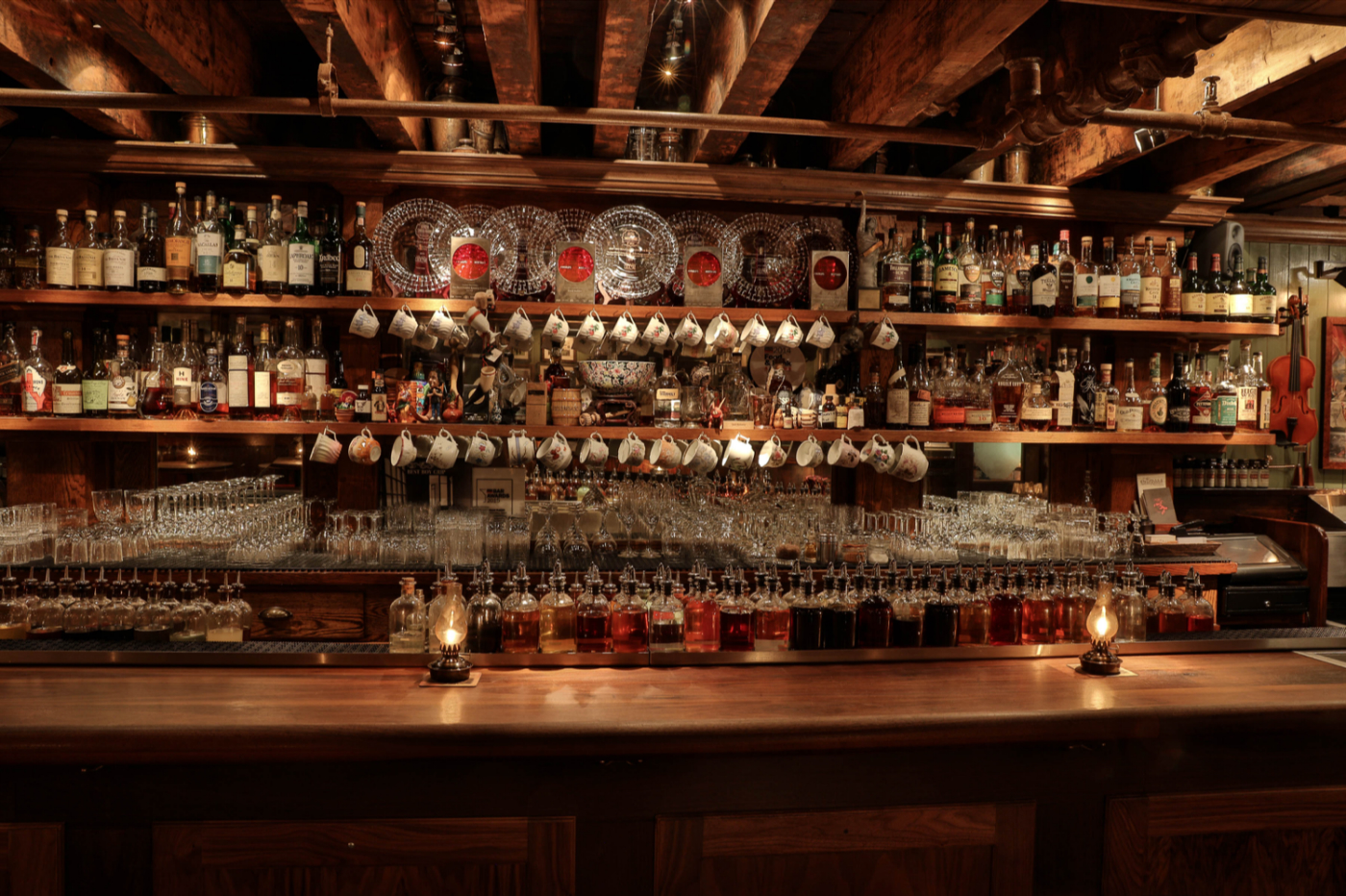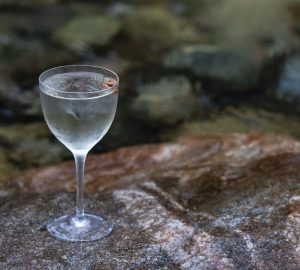The NYC bar’s new book Mixology and Mayhem maps out the team’s process from structure to seasonality. By Elysia Bagley.
The newest addition to The Dead Rabbit’s family of written works, Mixology and Mayhem unleashes the secrets of building a story-based brand and developing “the world’s best cocktail menu”. The book was written by bar founders Sean Muldoon and Jack McGarry and beverage director Jillian Vose, with contributions from the rest of the team – including bartenders Harrison Ginsberg and Samantha Casuga, who recently shared some of the treasures of the text at their masterclass in Shanghai (see the video at the bottom of this post to check that out).
With insight from the class and the book, here’s a look into The Dead Rabbit’s methods behind the madness of developing a winning cocktail menu.

1 Wireframes for menu structure
With each menu, Vose creates a wireframe of what it will look like in terms of styles of drinks, setting up the menu by preparation methods (built, shaken, stirred, etc), drink types (sours, fizzes, punches, cobblers, Martinis, Old Fashioneds, etc) and flavours (sweet, sour, boozy, low abv, spicy, sparkling, etc). This may also include ingredients like types of spirits, sweeteners, fruits, veggies and herbs and so on. The most important point is that all of this begins before creating any drinks, and the team chooses cocktails to fit the wireframe.
“Menus are all about balance,” she explains. “This means making sure there’s a style of drink for different palates, but within each of those categories, of course there’s a world of possibilities.”
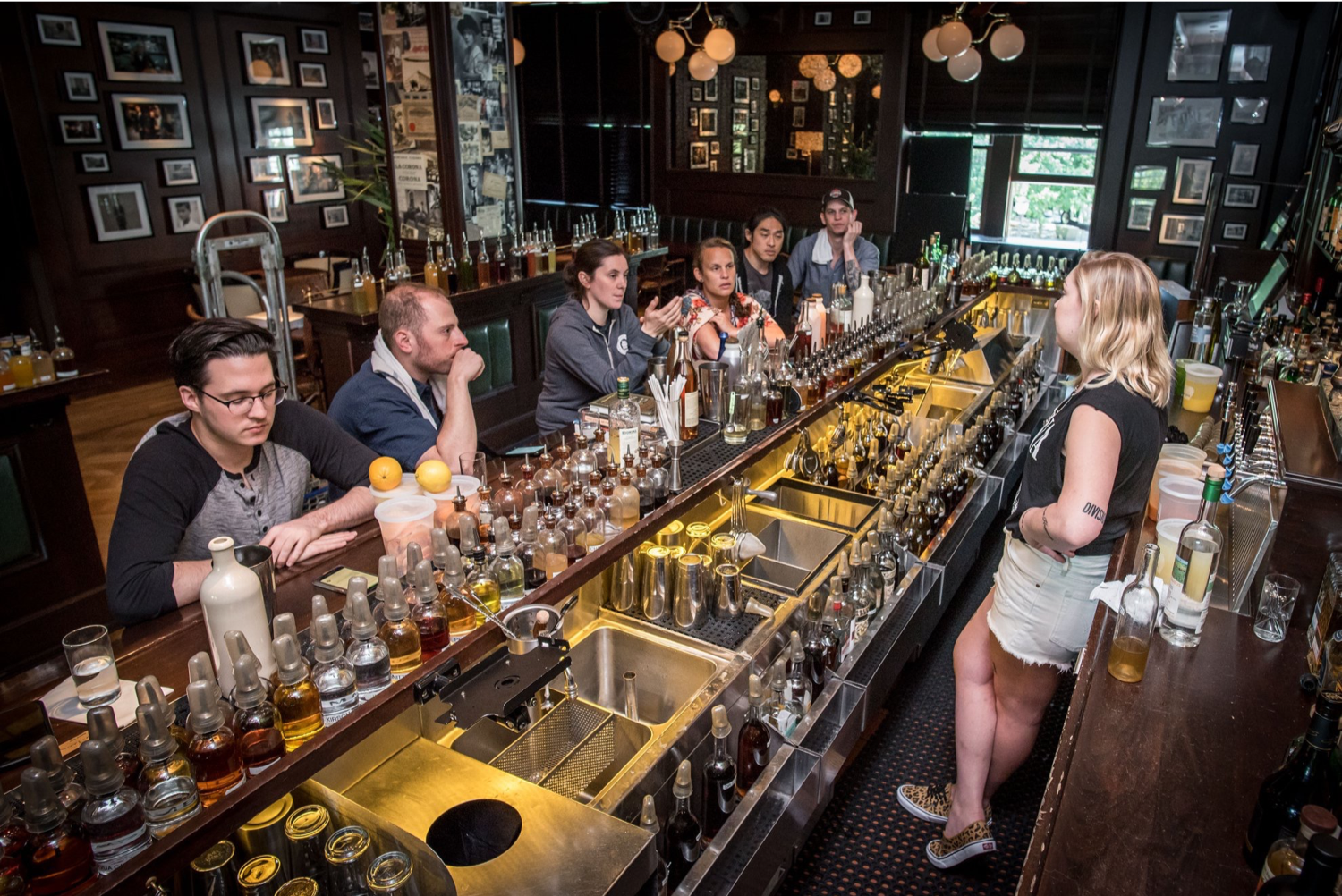
2 Research and development
At The Dead Rabbit, r&d is the biggest step of cocktail development, taking about two months per menu. The process is a democratic one: “It’s collaborative cocktail development where everyone has a little of their hands in everybody’s cocktails,” says Ginsberg. “The team sits together and we evaluate each other’s drinks.” Some drinks are “presented, tweaked and re-presented” up to four or five times, at which point, if it’s not right, it’s time to move on.
3 All ideas welcome
Well, they’re not just welcome from everyone – they’re expected, and there are “no passengers”: the whole team shares their drink ideas, tastes everything, and provides feedback. “I recommend that once you have an idea, you put an outline recipe down on paper before you start mixing anything,” advises Vose. “This may sound daunting, but the more research you’ve done on flavour pairings, the easier this gets.”
Vose also encourages the staff to think hard about the way guests may perceive a drink, and the assumptions they’ll make about its taste. Every idea is fine-tuned on multiple levels. “With an original idea, more often than not, the first version will be way different than what actually ends up on the menu,” says Casuga.
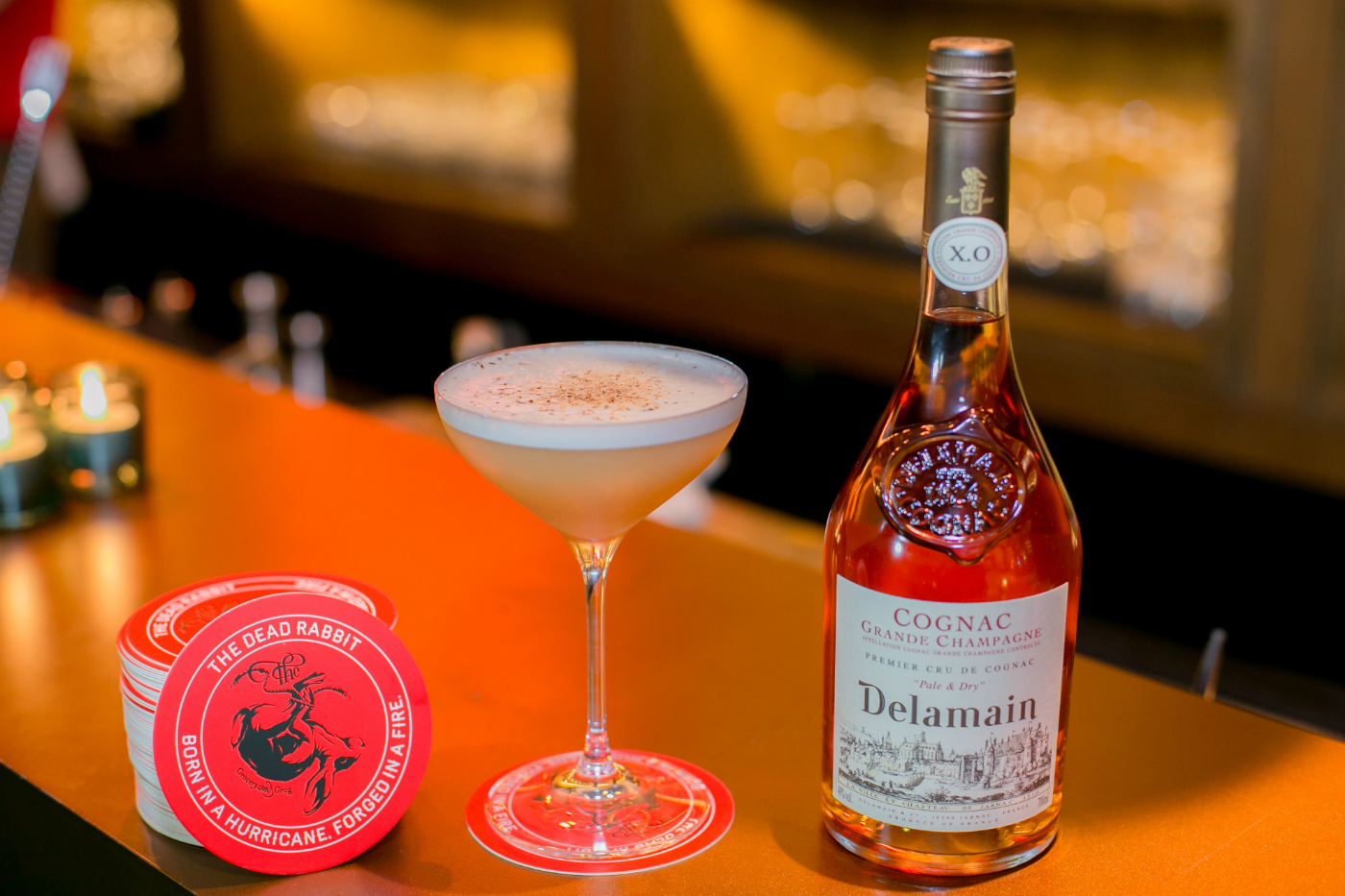
4 The right fit
“Even if a drink tastes great, it still has to fit the menu,” writes Vose. “Sometimes a new drink isn’t right for the season, or there may be too much of the same style or a particular ingredient already. So a fabulous new cocktail may be banked until the next menu, when it will be considered again.”
For every bartender on the team, Vose says getting your cocktail on the menu is something to celebrate. “It always feels like an achievement,” she says, “whether it’s your first or your twenty-first.”
5 Hardware and software
To track the process, the team uses Evernote software to “remember stuff, collate feedback, share ideas and eliminate repetition.” Aside from that, their r&d sessions involve some good old-fashioned poster boards, coloured markers and a vast amount of sticky notes. Vose uses these to create a puzzle of where drinks will go on the menu – quite important in terms of guests being able to navigate the bar’s hefty roster of drinks.
After the menu is properly organised, drinks move from the Evernote development folder to the final folder, where they’re named and the staff can study them before the menu launch.
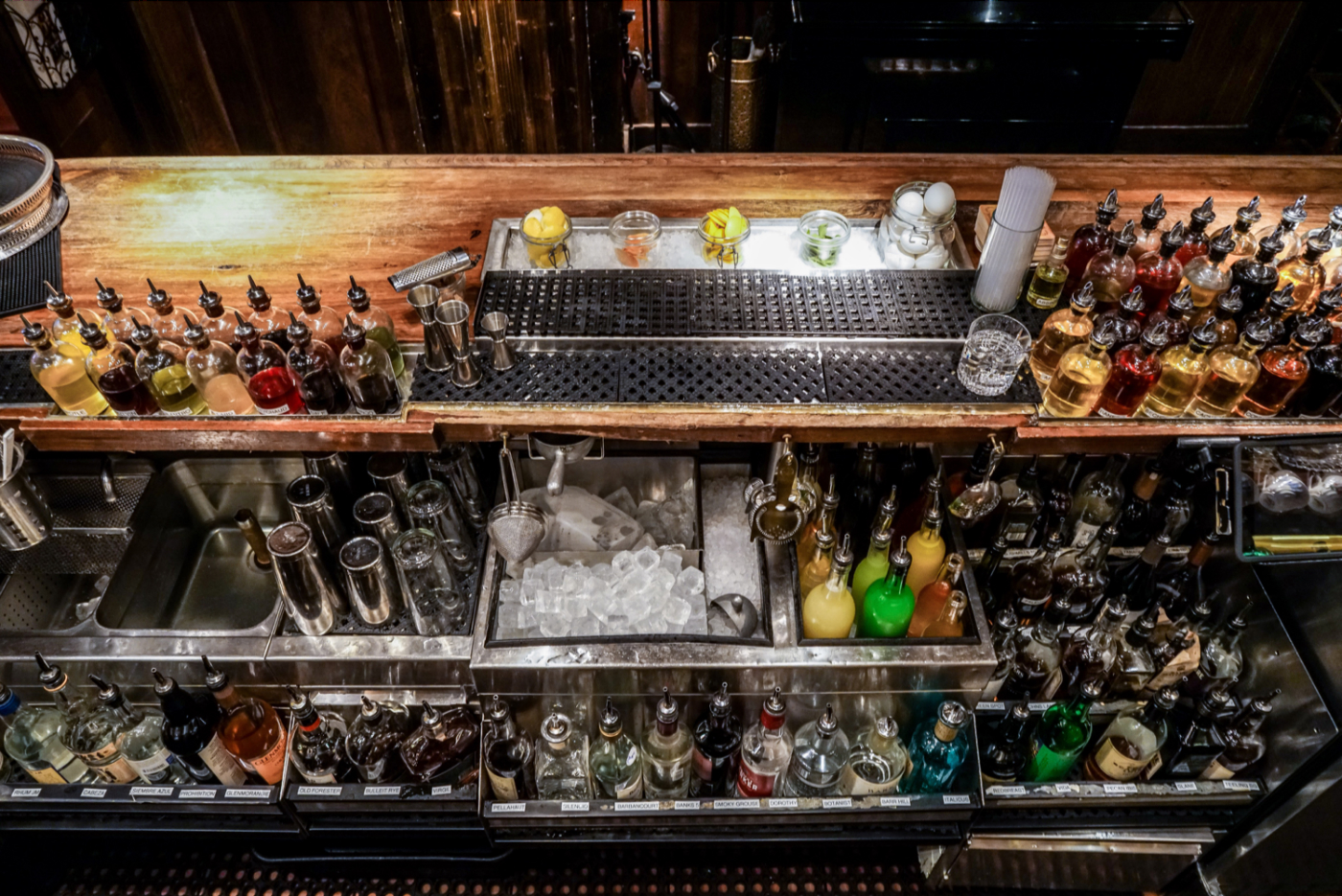
6 Mise en place
Organisation is an integral part of everything. For any given menu, The Dead Rabbit has about 200 “cheater” bottles of bitters, tinctures, infusions, juices, fortified wines, vermouths, syrups and the like. Everything is arranged by category, and in alphabetical order within said category. “I map out the mise en place and make labels for everything, plus an inventory of what ingredients are being taken off and what new ones will be going on,” explains Vose. “The menu changeovers take a lot of time and effort to get everything switched in one day, so you’ve got to be as organised as possible.”
7 Systematic building
In addition to Vose’s mise en place, there’s also a particular method for drink building which the team never strays from – reflected in the order of ingredients of each recipe found in Mixology and Mayhem. Ginsberg and Casuga emphasise that while their way is unorthodox and very difficult for new bartenders at the start, this systematic method for organising ingredients and building drinks becomes second nature after a while. The process becomes so familiar that they can really turn off and make cocktails instinctually. “The way we set up the bar is very important,” the team stresses. “It’s always the same no matter who’s working. Once it’s set up, we can execute drinks extremely quickly, extremely efficiently and what we like to think of as perfect every time.”
8 Consistency and quality control
“Once a new menu is finally ready, the entire staff needs to taste it and understand it so they can speak knowledgably to guests about each drink and its ingredients,” Vose explains. After it’s been in use for several weeks, the whole team gets a full review of menu, and Vose, Muldoon and McGarry perform quality checks by regularly ordering and tasting drinks from each bartender.
Recipe (Click to view)
The Dead Rabbit’s Famous Irish Coffee


